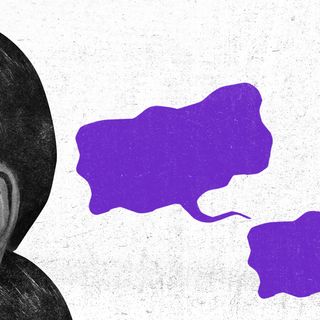Post-Traumatic Stress Disorder, or PTSD, is notoriously difficult to define and diagnose — especially more so for women. The American Psychological Association defines it as “a psychiatric disorder that can occur in people who have experienced or witnessed a traumatic event such as a natural disaster, a serious accident, a terrorist act, war/combat, rape or other violent personal assault.”
Critics have long pointed out that the medical and legal definitions of trauma and “traumatic events” lack a gender perspective. Now, new research adds another dimension to the problem: for people who menstruate, trauma symptoms like flashbacks, nightmares, panic attacks, anxiety, chronic pain, trembling, fluctuate across the cycle depending on the presence of a hormone called estradiol.
According to the study published in Psychological Trauma: Theory, Research, Practice, and Policy by the American Psychological Association, low estradiol during the first few days of the cycle means higher and more severe symptoms. Higher estradiol — commonly around the time of ovulation — leads to a dip. The implications of this are significant: it could make medical practitioners more gender-informed in their diagnoses of PTSD while evaluating trauma symptoms and the corresponding time.
“Low-estradiol portions of the cycle might be the time window where interviews would be most sensitive to any current PTSD symptoms and when the reported symptoms might be most severe,” the authors note.
Previous studies noted the link between low estradiol and high stress, fear, and limbic responses.
“When in the cycle you assess women might affect whether they meet diagnostic criteria for PTSD, especially for people who are right on the border,” said psychologist Jenna Rieder of Thomas Jefferson University, Philadelphia, in a press release.
The present study included 40 participants with normal menstrual cycles, between the ages of 18-33, who had witnessed or experienced a traumatic event like sexual violence or serious injury. Participants were asked to describe the trauma and the PTSD symptoms they’d experienced in the past month while measuring for estradiol in their saliva.
Researchers also looked for two other biomarkers of stress in the saliva: the cortisol hormone, and the enzyme salivary alpha-amylase. They found lower levels of the former and higher levels of the latter associated with low estradiol. “In a healthy system we want a moderate, coordinated response of both of these biomarkers,” Rieder said.
Related on The Swaddle:
Researchers Find Blood Biomarker That Can Potentially Help Prevent, Cure PTSD
In the second part of the study, participants had to answer five daily questionnaires and a PTSD checklist for 10 days, covering the estradiol high and low portions of the menstrual cycle. Results showed that there was greater variability in moods and more severe PTSD symptoms on low-estradiol days.
The research is also significant from a patient standpoint, to understand what is happening to them. “For women who are naturally cycling, it may be useful to understand how the menstrual cycle affects their symptoms. When you can explain what’s happening biologically, it often becomes less threatening,” Rieder added, in the press release.
PTSD research is extremely loaded in terms of gender. Its associations with war and male combatants gave it the colloquial name “shell shock,” and male-centric definitions of trauma have often dominated the discourse on PTSD. As a result, there have been studies concluding that women are diagnosed with PTSD more than men despite “fewer” traumatic events — without accounting for the fact that the definition of trauma did not include sexual abuse or assault at the time.
This has changed over time, but progress has been slow. It was only last year that the World Health Organization stated that women are the single largest group of people affected by PTSD, due to the high prevalence of sexual violence.
Several other factors can affect women. Another recent study by the Imperial College, London, found that ectopic pregnancies or miscarriages can lead to PTSD in women. Previous research found that the same also applies to women who experience stillbirths.
The present study thus not only sheds more light on the issue but is also one step towards mainstreaming PTSD as a gendered issue and facilitating avenues for greater patient advocacy in its diagnosis. This is especially pertinent in India, where mental health support in general and especially for women, is severely lacking.




